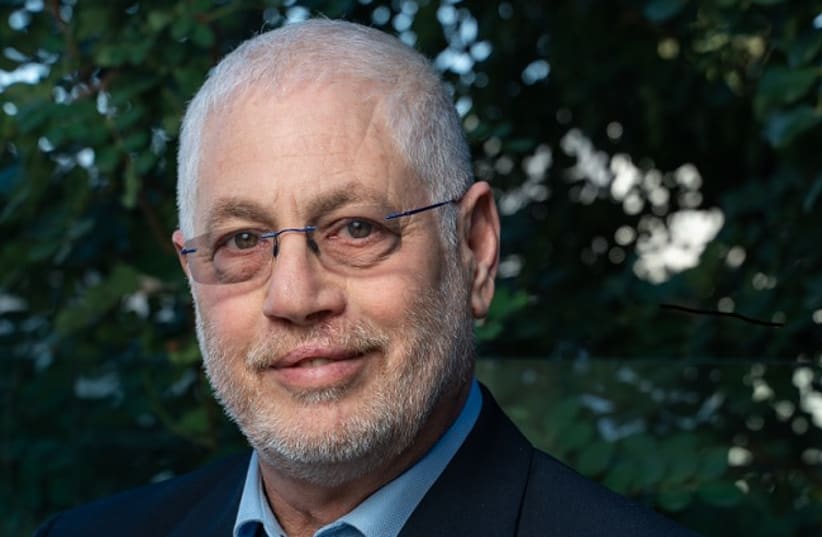“We’re trying to look into the future of academia,” says Professor Uri Sivan, president of the Technion – Israel Institute of Technology. In 2019, Professor Sivan took office as president of Israel’s oldest university. That fall, just a few months before the outbreak of the pandemic, Professor Sivan and his team began to formulate the Technion’s strategic plan for the coming decade.
Professor Sivan says that there are two major developments occurring in the field of higher education. He calls the first process ‘digital learning.’ Along with distance learning, innovations in digital teaching technologies are being developed. “In the past, the professor was the single source of information, perhaps together with a textbook,” says Professor Sivan. “Today, information is available everywhere. There are online courses where one can listen to teachers from the best universities in the world.” It’s not just the ability to participate by long-distance, he suggests, but rather the emergence of new digital teaching technologies, which will evolve dramatically in the coming years. With the tools that are available today, one can access course material in many ways. Physical meetings between professors and students to teach the course material are not as essential as they once were. The issue then becomes, in his view, “how to make best use of the physical meetings between the professor and his students.” It is a major challenge, says Professor Sivan, because universities have operated in the same manner for close to 800 years and have to change now. The Technion’s strategic plan focuses on utilizing students’ on-campus time in the best way possible.
“The Technion is investing heavily in addressing this question,” he says. Research has shown that encounters between professors and students can be best spent by meeting in smaller groups, discussing projects, providing hands-on experience, mentoring, and teaching ‘soft skills,’ such as working in groups. “A clear conclusion from the last two years,” notes Professor Sivan, “has been that there is no substitute for physical meetings. They are critical to the educational process.”
In addition to incorporation of new teaching methodologies, the Technion is adapting its curriculum to match the expectations from leading engineers, scientists, architects, physicians, and teachers in the 21st century. Most notably, it revises and significantly expands its department for humanities and arts based on the premise that while taking professional decisions throughout their career, its graduates should be able to consider environmental, societal, and ethical implications of these decisions. “We should provide our students with background in the humanities to help them crystalize a broader perspective of our society and its needs,” says Professor Sivan.
The second significant development in higher education, he says, is the changing relationship between academia and industry. Traditionally, explains Professor Sivan, basic research was performed by academia, and practical research was done by industry. This is no longer the case, and the borders have become blurred. Today, industry is performing fundamental research in many areas, including software, artificial intelligence, and quantum computers. Furthermore, industry itself is entering the world of education. Professor Sivan cites the example of the Dyson Institute of Engineering and Technology, which was established by Dyson Limited, the manufacturer of vacuum cleaners, dryers, and other household appliances. Today, there are many collaborations between universities and global companies centering around education, he adds. “Academia needs to decide how to position itself,” says Professor Sivan, stating that the Technion has decided to strengthen its ties with industry. “We have decided to bring a few selected strategic industrial partners onto campus so that we can tighten our connection to industry.”
A prime example of this type of collaboration is the agreement between the Technion and American software giant PTC. The company will invest NIS 15 million in the creation of a research and development center at the university’s main Haifa campus. PTC and the Technion will jointly research and upgrade learning processes relating to advanced manufacturing technology.
Another aspect of the Technion’s greater connection with industry, says Professor Sivan, is the tremendous amount of technology coming from the Technion to industry. “We have revolutionized our technology transfer from the university to industry,” he states. “We are now setting up approximately 15 companies a year. In the past two years, we have established 28 companies, and this space is growing fast. I wouldn’t be surprised if the Technion became the largest holding company in Israel.” He adds that 90 percent of academic institutions lose money on the commercialization of their technology, 5 percent break even, and just 5 percent make money. “We're well within that last 5 percent,” he says.
The strategic plan mitigates the growing gap between the traditional disciplinary structure of universities and the grand challenges of the 21st century being highly multidisciplinary. To that end, the plan defines a few outstanding research fronts, including human health, sustainability, and digital industry as pillars of the university’s research development in the coming decade. Each front will bring together researchers from all disciplines, jointly addressing the same challenges using different tools and perspectives. Furthermore, these efforts are supplemented by strategic collaborations with industry and affiliated hospitals. This move reflects a cultural shift from traditional discipline-oriented to challenge-oriented research.
As the Technion prepares to celebrate its centennial in 2024, it is well-positioned in plans for its future and the world of higher education.
This article is taken from The Jerusalem Post Annual Executive Magazine 2021-2022. To read the entire magazine, click here.
This article was written in cooperation with Technion – Israel Institute of Technology
